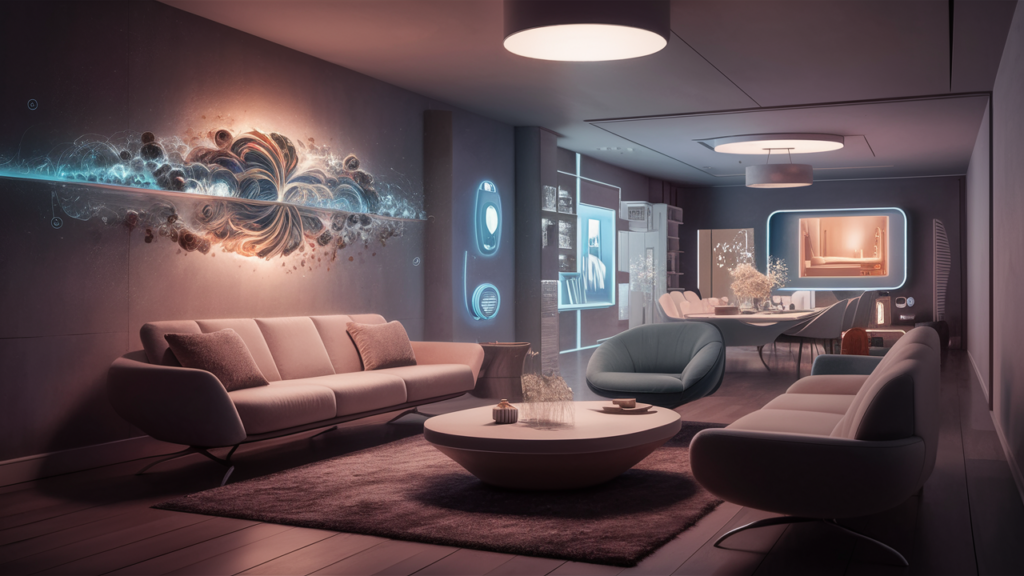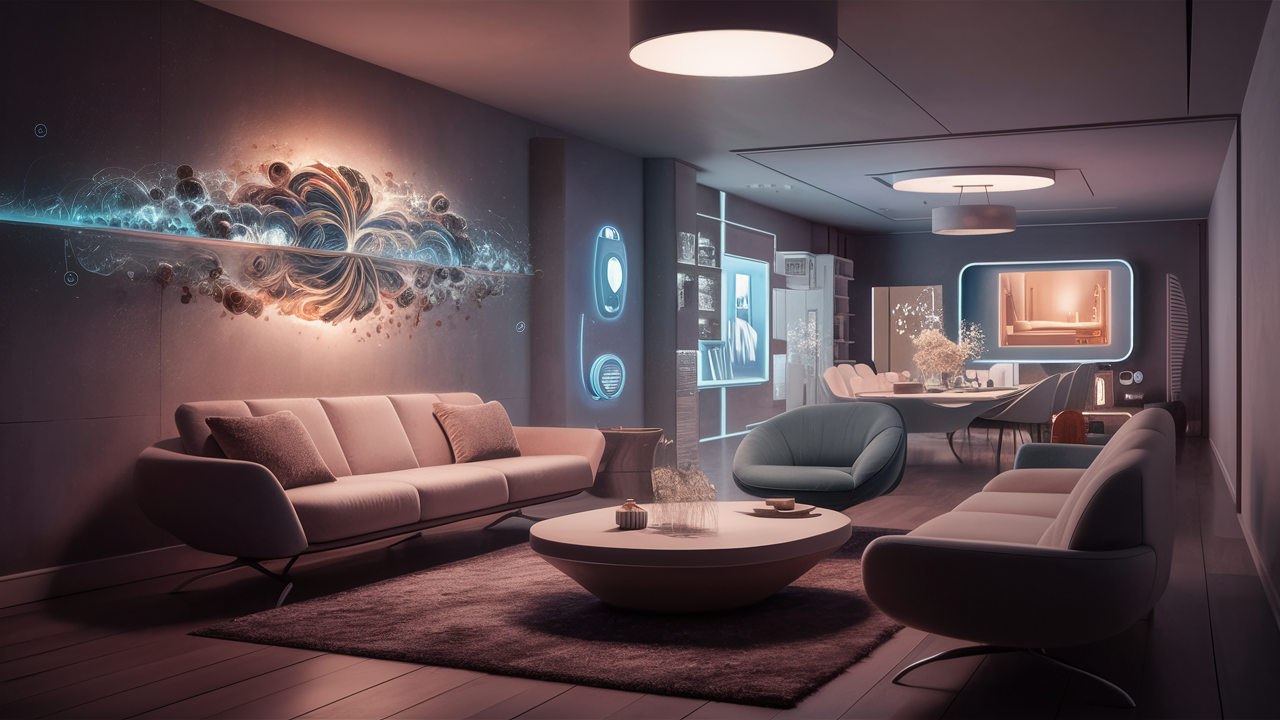In recent years, Artificial Intelligence (AI) has made remarkable strides in various industries, from healthcare to finance, and now it’s making its mark on the world of home interior design. Imagine having a personal interior designer at your fingertips, capable of understanding your tastes, preferences, and budget constraints, and transforming your living space into a harmonious and aesthetically pleasing sanctuary. This is no longer a distant dream but a reality thanks to AI-powered home interior design tools and platforms.

Content
Embracing Personalization
One of the most significant advantages of AI in home interior design is its ability to offer personalized solutions tailored to individual needs and preferences. Traditional interior design services often come with hefty price tags and limited options, leaving many homeowners feeling overwhelmed and dissatisfied with the results. However, with AI, users can input their design preferences, budget constraints, and even specific requirements such as space limitations or existing furniture pieces, and receive personalized design recommendations within minutes.
Streamlining the Design Process
AI streamlines the design process by automating mundane tasks such as space planning, furniture arrangement, and color coordination, allowing designers to focus on more creative aspects of the project. Advanced algorithms analyze vast amounts of data to generate design proposals that take into account factors like room dimensions, natural light exposure, and user preferences, resulting in more efficient and accurate design solutions.
Enhancing Collaboration and Communication
AI-powered design platforms facilitate seamless collaboration and communication between designers and clients, regardless of geographical location. Through virtual reality (VR) and augmented reality (AR) technologies, clients can visualize and experience their design concepts in real-time, providing valuable feedback and making informed decisions throughout the design process. This level of transparency and engagement fosters trust and satisfaction, ultimately leading to better outcomes for both parties.
Sustainability and Efficiency
With growing concerns about environmental sustainability, AI can play a crucial role in promoting eco-friendly practices in home interior design. By analyzing energy consumption patterns and recommending energy-efficient appliances and materials, AI helps reduce the environmental impact of residential spaces while lowering utility bills for homeowners. Additionally, AI-powered design platforms can optimize space utilization and minimize waste by suggesting modular furniture solutions and multi-functional layouts.
The Role of Data and Machine Learning
At the heart of AI-powered home interior design lies data and machine learning algorithms that continuously learn and improve from user feedback and historical design data. By analyzing patterns and trends in user preferences, AI can anticipate design trends, predict future demands, and offer personalized recommendations that resonate with individual tastes and lifestyles. This iterative process of learning and adaptation ensures that AI remains relevant and effective in meeting the evolving needs of homeowners and designers alike.
Overcoming Challenges and Ethical Considerations
Despite its numerous benefits, AI in home interior design also presents challenges and ethical considerations that need to be addressed. Privacy concerns related to data collection and usage, biases inherent in algorithmic decision-making, and the displacement of human designers are some of the key issues that require careful consideration and regulation. However, with proper safeguards and ethical guidelines in place, AI has the potential to democratize access to quality design services while empowering designers to unleash their creativity and innovation.
Conclusion: Shaping the Future of Home Interior Design
In conclusion, AI is revolutionizing the way we decorate our homes by offering personalized, efficient, and sustainable design solutions that cater to individual preferences and lifestyle needs. By harnessing the power of data, machine learning, and advanced technologies like VR and AR, AI enables seamless collaboration, enhances creativity, and promotes environmental sustainability in home interior design. While there are challenges and ethical considerations to navigate, the potential benefits far outweigh the risks, paving the way for a future where everyone can enjoy a beautiful and functional living space that reflects their unique personality and style. As AI continues to evolve and improve, the possibilities for innovation and transformation in home interior design are endless, promising a brighter and more inspiring future for homeowners and designers alike.
FAQs on AI Home Interior Design:
What is AI home interior design?
AI home interior design refers to the application of Artificial Intelligence technology in the process of planning, decorating, and furnishing residential spaces. It involves using algorithms to analyze user preferences, spatial constraints, and design trends to generate personalized design solutions.
How does AI contribute to home interior design?
AI enhances home interior design by automating repetitive tasks, offering personalized recommendations, and improving the efficiency and accuracy of the design process. It can analyze vast amounts of data to generate design proposals that align with individual tastes and lifestyles.
What are the benefits of using AI in home interior design?
Some benefits of AI in home interior design include personalized design solutions, streamlined design process, enhanced collaboration and communication, sustainability and efficiency, and the ability to anticipate design trends and preferences.
Is AI home interior design suitable for all types of homes and spaces?
Yes, AI home interior design can be adapted to suit a wide range of residential spaces, from small apartments to large houses. Whether you’re looking to redesign a single room or renovate your entire home, AI can provide customized design solutions tailored to your needs.
How does AI personalize design recommendations?
AI personalizes design recommendations by analyzing user input, such as design preferences, budget constraints, and space limitations. It then uses this information to generate tailored design proposals that reflect the individual style and preferences of the user.
Can AI home interior design platforms be used by people with limited design experience?
Yes, AI home interior design platforms are designed to be user-friendly and accessible to people with varying levels of design experience. They often feature intuitive interfaces and design tools that guide users through the design process, making it easy to create professional-looking designs.
Are there any privacy concerns with AI home interior design platforms?
Privacy concerns with AI home interior design platforms may arise due to the collection and usage of personal data. However, reputable platforms implement strict privacy policies and security measures to safeguard user information and ensure compliance with data protection regulations.
How accurate are the design recommendations generated by AI?
The accuracy of design recommendations generated by AI depends on various factors, including the quality of the data input, the complexity of the design task, and the sophistication of the AI algorithms used. While AI can provide valuable insights and suggestions, human oversight and input are often necessary to refine and finalize the design.
Can AI home interior design platforms replace human designers?
While AI home interior design platforms offer valuable tools and resources, they cannot fully replace human designers. Human designers bring creativity, intuition, and emotional intelligence to the design process, which AI algorithms alone cannot replicate. However, AI can complement human designers by automating mundane tasks and providing data-driven insights.
How can I get started with AI home interior design?
You can get started with AI home interior design by exploring reputable AI-powered design platforms, uploading your design preferences and specifications, and experimenting with different design options and configurations. Additionally, you can seek guidance from professional designers who specialize in AI-assisted design solutions.

My name is Author Name. I post about home improvement ideas and how to make your home look beautiful and liveable. I hope my posts will help you with your DIY projects!












